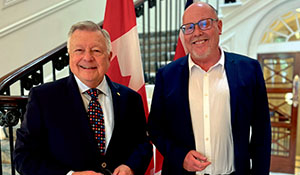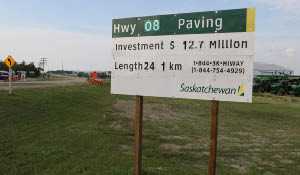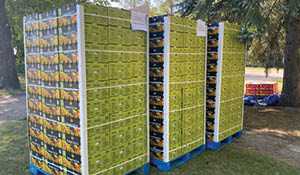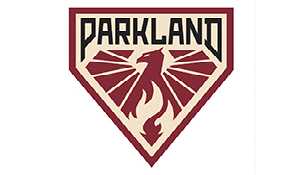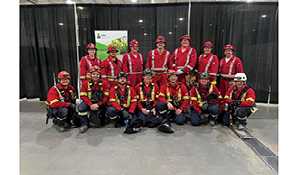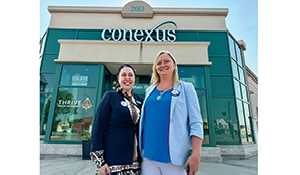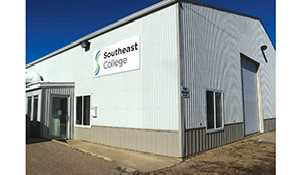Conexus CEO visits Moosomin
Saskatchewan Credit Unions Conexus, Synergy, and Cornerstone proposing merger
June 16, 2025, 11:23 am
Ashley Bochek
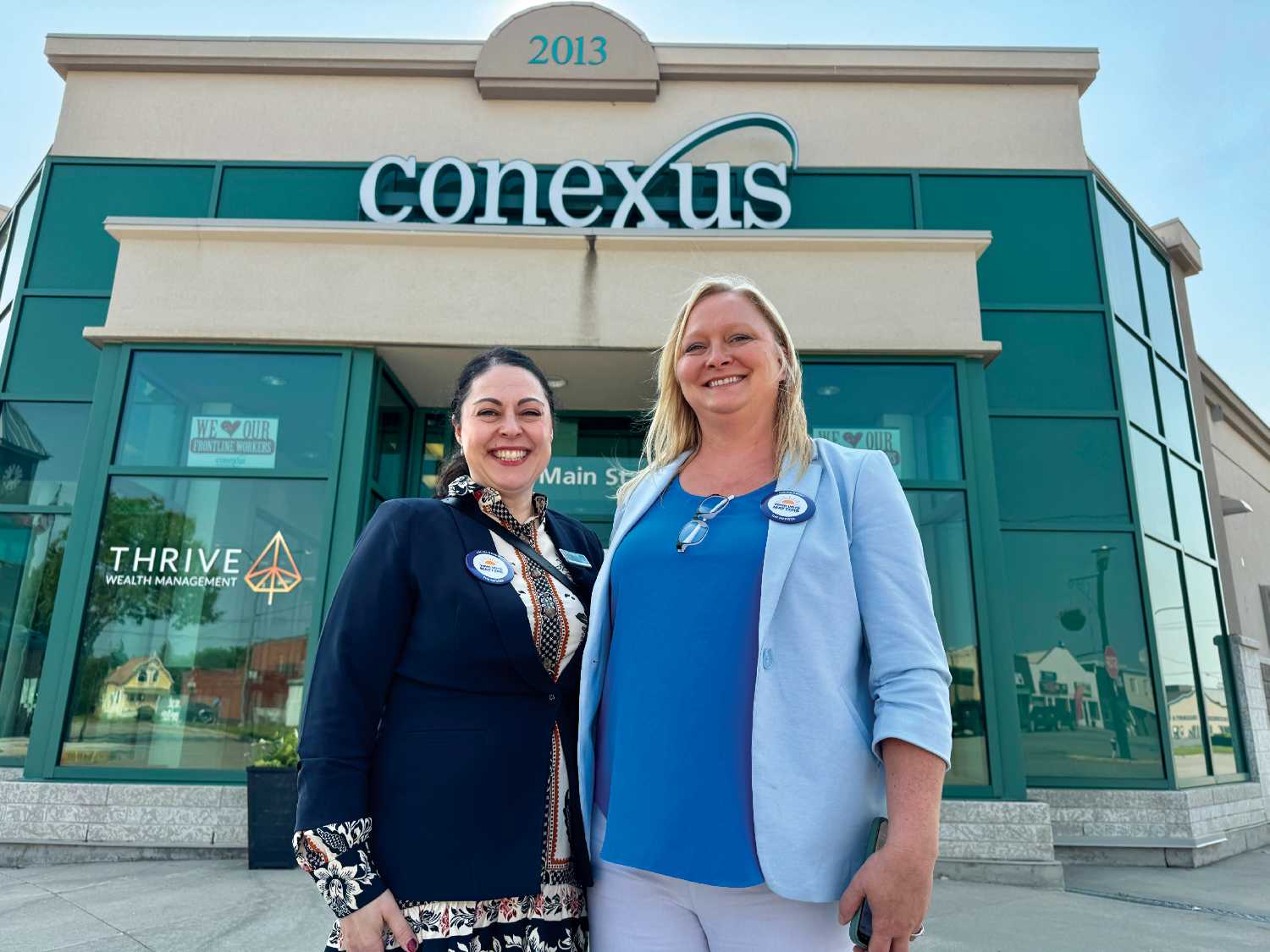

Celina Philpot, Chief Executive Officer of Conexus Credit Union visited the Moosomin Conexus branch this past Monday.
The credit union is asking their members to vote for a proposed merger between Conexus, Synergy, and Cornerstone Credit Unions in Saskatchewan to grow the credit unions’ scale.
Voting started June 3 and closed last Friday, June 13.
Philpot explains her background working for the credit union.
“My name is Celina Philpot. I am the Chief Executive Officer for Conexus Credit Union. I have been with the credit union in Saskatchewan for three years in September and have been part of credit unions for 29 years. I am originally from Winnipeg—born and raised and I am first generation Canadian.
My parents immigrated from Portugal in the ‘70s. I have three sisters and I am the second of four. I have got two boys of my own who are 19 and 21 years old and my husband, Glen. We moved to Regina about two and a half years ago and made it home.”
What Conexus stands for
Philpot explains the unique principles Conexus Credit Union stands for.
“Conexus is a credit union which is a make-up of many mergers. We have been serving our members for over 80 years and we are committed to the seven principles of cooperatives, one of them being, ‘We’re here for the members. They are member-owners which makes us super different from the chartered banks. Their main purpose is to drive profit for their shareholders and we drive value for our members. That is what makes us unique. We provide all the services a bank would, however, the perspective is different as our members are our owners.”
Opportunities from merger
Philpot explains the opportunities the merger will bring to credit unions across Saskatchewan.
“We see an opportunity with the three of us coming together as we operate within our environment. Banking is always getting more competitive. So you have your near banks as we call them, so your Neo’s and Wealth Simples and the competition just gets more and more. So that draws a lot more resource requirement and then in addition to all the digital technology which is also another thing you have to pay for, there is increased fraud potential so those costs are going up, plus regulatory oversight, which is a good thing—they are there to protect consumers—so with those rising costs and competition we just thought wouldn’t it be good if we all came together and could serve our members better.
“We are all cooperatives so the principles of how we operate is the same. We found we have a lot of value alignment. We are here to support Saskatchewan so as provincially regulated credit unions, we only serve the members of Saskatchewan. So there is commonality there. Then, we did a really thorough analysis like a business case with a third-party accounting firm that helped us do that, and we have to make sure the numbers work as a good financial institution and the numbers were really positive so based on the assessment of the business case we thought this is good for our members, too.”
She explains the credit unions across Saskatchewan.
“It will be a branch network expansion. Today, we have 30 branches as Conexus and we will expand to 57 if the vote goes through and there is no overlap in the branch networks. Synergy is on the west side of the province around Lloydminster, Cornerstone is in the eastern side of the province so like Yorkton and close to the Manitoba border so it is a really nice complement.”
The three credit unions have agreed to maintain the current branch network if amalgamation goes ahead.
“We have made some commitments to our members—number one being the branch network will remain, so no loss of branches and the employees, no loss of employees because we believe coming together will drive better value for our members.”
Challenges if merger was voted against
Philpot explains the next steps for Conexus if the merger is voted against.
“We can still go. It is more could we offer greater value to our members. You try to draw the per-unit cost down so that you can drive that value to our members.
“If we don’t get a supportive merger we will continue on as we are today, but it would enable us to provide more value to our members. Also, as our members grow and we are excited to see them grow, but sometimes they can outgrow us from the capital requirements so we would like to not have to let them go, so by putting our capital together we can grow with larger businesses so we can remain their financial institution of choice.”
Philpot says the merger was brought up in a board meeting among the credit unions in Saskatchewan.
“Credit Unions typically work together—we are a cooperative so we meet together and discuss topics and issues and we do that on a frequent basis so during one of those types of engagement the board chairs got talking and asking ‘What kind of things are you struggling with?’ So a little bit of a commonality going on thinking we can tackle these things together. It started about a year ago.
“Understanding one another’s challenges and opportunities and all of us coming together could probably solve these as a collective rather than trying to do it all on our own. It comes from those types of conversations on a regular basis and working together.”
Why members should vote for merger
Philpot says the merger will offer better opportunities for members in the credit union.
“Primarily, they will get this extended branch network so you can stop in at any of the locations and do your business. The other thing is the capital—if you are a large business and getting bigger and would like to stay with us, we can actually do more credit and lending with you. That will be another benefit.
“We are also looking to introduce a member reward program in addition to our services—something that adds value to our members. I always keep in mind that there should be value to membership. I am going to steal from American Express—membership has its privileges so, ‘What else can I get being a member of this cooperative?’ That is what we are driving toward.”
Credit unions in rural Saskatchewan
Philpot says the merger will not negatively affect any of the credit unions.
“We will have to merge our systems so that will be some change. Often members will ask ‘Do I have to change my account number?’ And honestly we don’t know yet. Right now we have three separate institutions, but when we bring it together is there a chance that some account numbers may be the same, maybe.
“There may be some of those growing pains and we have ways to map information so you don’t have to do a lot of work, but there may be some of those changes.
The name on the door will change once we decide of the three which one resonates more with our members, we are doing some work on that now, but the branches will be there like you’re used to, the people will be there like you’re used to.
“We are just trying to be very mindful of implementing change when it adds value and trying to make change with as little impact as possible. If we do have to change an account number we will, but we are trying to minimize that level of change.”
One CEO
Philpot says the board will collectively choose one CEO to run the new organization after the merger.
“There are currently three CEO’s from each of the three organizations so there will be only one.
“For 29 years I have been working in the credit union system working my way up. I started as a part-time teller in a summer job and here I am and I moved my family from Winnipeg and it was a hard transition to move from Winnipeg to Regina, but I love the credit union. It has always been where I worked and it has always felt right to me. I had a chance to go to the charters—they were all at the universities trying to take us to management programs and I thought I just liked the credit union. It feels right. There is good value alignment.
It’s always where I’ve been and I have to say I love the credit union and the people I work with. This is where I feel I can add value so I would really like to stay, but the decision is to be made by the Board of Directors and we will see.”
What to expect after merger
Philpot explains the next steps the members can expect after the merger.
“We will have a legal merge date. It will be effective January 1, 2026 and that is just one of many first dates. We need to bring all the systems together. When the signs all change, that will be a first, there will be when we align our products, that will be another first. That member reward program that we are very excited about will be another first. There will be many firsts and we will make sure we are communicating with members well in advance and having our employees ready so they can support people throughout the changes that happen, but there will be many firsts. The new entity going forward will be created that day.”
Philpot says all the credit unions will remain open throughout the transition.
“The credit union stays open through all of this. It is just if you are a member and want to use the credit union in Lloydminster, for example, you wouldn’t be able to yet because all the systems aren’t integrated yet. Once those systems are integrated then you can go anywhere.”
Future of Conexus if merger is voted against
Philpot explains the future of Conexus if the merger were to be voted against.
“We just continue to do our own thing. Our board will regroup and say, ‘What do we do now?’ Because the factors in the environment aren’t changing. The increase in costs, technology enhancements need to be there, increased regulation keeps going up—which is good, but it costs. Every time the government asks you to do something new, they aren’t helping you pay for it and it is the standard and it keeps getting higher. So those things will still be there. As credit unions, we are competing against the chartered banks and they are ginormous. Even in their environment with their mergers they are saying ‘we need scale in order to compete.’ Credit unions are no different, we need scale in order to effectively compete and drive value because members want good rates, good value, great service, they want digital, they want branches, and we want to be able to deliver those things.”
She says the credit union will always value its members.
“That is always a challenge. We are still small compared to Royal Bank and I don’t believe it is the size that dictates the change, it is the commitment to your members. For us, we are owned by our members and that is never going to change. We are never going to have a shareholder mentality because we are too accountable to our members.
“What is different for us is we still have the basics of lending at the offices. We don’t have the computer say yes or no. Employees have the authority within their own locations to make those decisions. We can give you an answer in 24 hours if our members needed something and we understand the market better. We don’t know our members as well as we used to, communities grow, but at the same time having those employees in the branch who know their members because they do, they still have that authority.”
Uniqueness of Credit Unions
Philpot says she enjoys advocating for her members working at the credit union.
“What I love about credit unions and it is unique, I feel that I am empowered to advocate for my members. I know there are rules and we follow them, but for instance if there is a special case I get to go right to the top.”
“I can work around the computer saying no, because we know our members and their background and it is exciting and we are going to support you. There is a business model in every single business and we have to respect that, but as credit unions we try to go that extra mile because we are member owners. It is just a different feel from banks.
“I always felt like I wouldn’t be able to advocate for the people outside the credit union system. I have always felt in the credit union I can advocate for my members, it is just those little things, and I feel good about being able to do that. It is just that value alignment thing for me.”
Questions regarding merger
Philpot lists some of the common questions she has been asked regarding the merger.
“Most of the questions are, ‘Are you guys going to keep the branch open?’ And second, ‘Are you going to keep the staff here?’ And the answer is yes and yes.
We have made ten commitments to our members, one of them is the branches will remain—we have no overlap so that works good, and we are committed to the employees that want to be here, so we have already told the employees if they want to be part of this journey, there will be some learning, but if you are committed to staying, we are committed to having you.
“The other one I get asked a lot is our no fee checking account. A lot of members like that, so they ask if we are going to keep it and we made a commitment and we will continue to have a low fee and no fee option. We are just open to saying what you are used to, we are going to keep it like that and make things as smooth as we can and making sure we are driving value for you.”
Future of credit unions
Philpot explains the future she hopes to see for credit unions in Saskatchewan.
“I would like to see the credit union system come back to its glory days where at one point we in Saskatchewan, market share was at 58 per cent and it has gone down to 38 per cent because we are missing out on young people who don’t get the credit union system.
“Conexus is moving to a specialized model and we are committed to our members.
“We also have our cultivator program too that is all about giving bright minds an opportunity to showcase your stuff and we will bring the financing people to you because you may have a brilliant idea, but don’t have access to capital or anybody to learn from, so we bring the people to you and look at great ideas. A lot of great ideas are built in Saskatchewan. The saddest thing for me is, they grew up here, but left.
“We want to keep people here so part of our commitment to Saskatchewan as a credit union is we want people to thrive and to help keep our young people and their bright ideas here.”


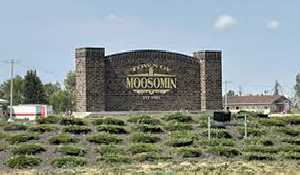

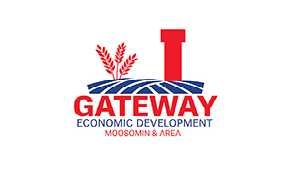
sm.jpg)

